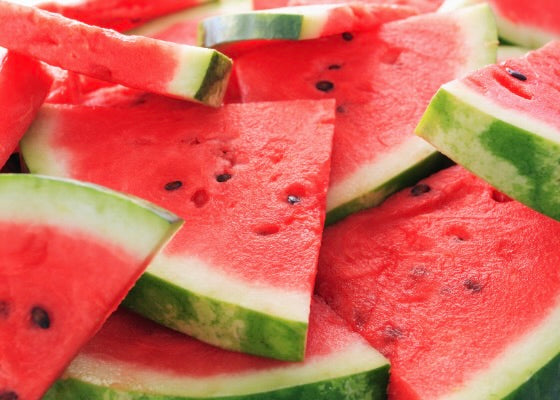Fermentation is a traditional method of preserving food that was especially useful before the availability of home refrigerators. This was one of the ways our great-grandparents and generations of their predecessors harvested vegetables such as cabbage, zucchini, and tomatoes in summer, then consumed them throughout the fall and winter. They allowed foods to ferment, that is, to allow bacteria and fungi residing on the surface of the vegetable to consume some of the components of the vegetable and convert them to acids that prevent spoilage. You’re probably already familiar with fermented foods in the form of kefir and yogurt. Cucumbers (pickles) and sauerkraut can also be fermented, but most store-bought products are not, instead being preserved in vinegar and brine and not allowed to ferment and thereby yielding none of the health benefits of the microbes present in fermented foods.
Fermentation preserves food when microbes consume sugars and fibers present to produce lactate (responsible for the characteristic tartness) and other acids that inhibit growth of unsafe bacteria. Unlike yogurt and kefir, vegetable fermentation occurs in an anaerobic environment, that is, an environment without oxygen. Successful fermentation therefore requires keeping oxygen away from fermenting vegetables, most readily accomplished by keeping vegetables submerged in water.
Many of the bacteria that ferment foods are among the healthiest strains for building and maintaining human bowel flora. Fermented veggies, kimchi, kombucha, and other fermented foods provide superstar probiotic species such as Lactobacillus plantarum, Lactobacillus brevis, Leuconostoc mesenteroides, Pediococcus pentosaceus, and Bifidobacterium species. Consuming fermented vegetables regularly, just as humans have done for thousands of years, inoculates your bowels with healthy bacterial strains and helps cultivate “communities” of healthy species.
This can be important for skin health because the skin is the outward expression of internal health. People who have conditions such as inflammation, insulin resistance (poor responsiveness to insulin that leads to weight gain, type 2 diabetes, and other conditions), and disrupted hormonal status—situations that are widespread and common—can show evidence of these disruptions as redness, pallor, and various skin rashes. Having a healthy intestinal microbiome can stack the odds in favor of exerting healthy and favorable effects on the appearance of skin.
Getting Started
Fermenting foods on your own on your kitchen counter is a virtually a no-cost process, costing only the price you pay for the vegetables (almost nothing when you grow them yourself!) and whichever herbs and spices you add. There are also a growing number of commercial products that are fermented that you will recognize by seeing “fermented,” “contains live cultures,” or similar designation on the label. (We like to leave store-bought fermented foods out on the kitchen counter for an additional 48 hours after purchase, unopened, to allow additional fermentation to occur, since commercial production is typically too brief to allow full fermentation to occur.)
To get started fermenting vegetables, a simple large jar or ceramic vessel can be used, thoroughly cleaned, of course, with hot soapy water. Key is to keep the veggies submerged and away from air. The two most common methods of keeping vegetables submerged below the surface is to either fill the jar to the top with water with no remaining air space and then screwing a cap on top, or to use some method (heavy plate, glass, stone) that fits into the mouth of your jar or vessel that keeps the veggies submerged. You can also buy a fermentation kit, but it’s really simple to assemble your own with items you likely already have on hand.
The basic ingredients you will need include:
- Raw vegetables: onions, green onions, peppers (bell, poblano, Anaheim, pepperoncini, serrano, etc.), asparagus, cucumbers, radishes, daikon radish, garlic, shallots, carrots, cabbage, green beans, zucchini, others. Chop the vegetables into bite-sized pieces, e.g., 1/2-inch squares or 1-inch lengths. Combine vegetables to create unique flavors, for example, asparagus and onions, green beans and garlic.
- Herbs and spices: Peppercorns, dill, garlic cloves, coriander seeds, mustard seeds, caraway seeds, rosemary, oregano. Many people also add grape or berry leaves to increase crispiness. When using herbs, fresh is always best, though dried can be used in a pinch.
- Sea salt or other salt: Just be sure it is not iodized salt, since iodine kills fermenting microbes.
- Water: Use filtered water, spring water, or distilled water, that is, water without chlorine or fluoride.
-
Optional—While you can ferment by putting the microbes that naturally reside on the skin of vegetable to work, you can accelerate the process by using a starter culture, i.e., a collection of microbes from another source. That source could be some of the liquid from a previous fermented food, or it can be a commercial starter culture you purchase. (Companies such as Cutting Edge Cultures and Cultures For Life have several good choices.) The use of a starter culture typically accelerates the fermentation process by a couple of days.
Basic Fermentation
Fill a jar or fermentation vessel with water, then add salt until the water tastes lightly to moderately salty, typically 1 1⁄2 tablespoons per quart of water.
Add the vegetables and your choice of herbs or spices. Stir to mix the vegetables with the salt water and to release any trapped air bubbles.
Submerge the vegetables and cover them with a plate or other clean object to keep them below the surface, then cover the vessel to keep pests out. The system should not be airtight but only loosely covered because the process of fermentation produces gases that must be released.
Set the vessel aside for at least two days. The time required varies with the type of vegetables used and the temperature, but fermentation can go on for weeks. Get into the habit of tasting your fermenting veggies. Once you obtain the flavor and degree of fermentation desired, refrigerate; this will slow further fermentation. Some mixes of vegetables will be ready within 48 hours, while others (e.g., sauerkraut without a starter culture) may require 2-3 weeks.
Optionally, after the vegetables have fermented, add a half cup of vinegar per quart of fermented mixture to enhance the flavor.
Should any white or other colored growth appear on the top, skim it off; this is mold. It does not harm the process, but you should not consume it. Fermented foods will remain safe for consumption for at least four weeks in the refrigerator. To minimize mold contamination, keep your fermenting vessels away from airflow such as heating or air conditioning vents, diffusers, fans, etc., and keep it covered. The covering does not have to be airtight but does need to block ambient airflow.
Here’s one recipe to get you started.
Fermented Eggplant, Cherry Tomatoes, and Garlic
1 eggplant, chopped into 1/2-inch thick cubes
8 ounces cherry tomatoes, halved
1/2 red onion, halved and sliced
4-5 cloves garlic
Filtered water, non-iodized salt
Place eggplant, tomatoes, onion, and garlic in your jar or other vessel. Fill with water, add salt, and stir. Fill water to very top or use your submerging system to prevent veggies from contacting air. Allow to ferment for 72 hours or until it reaches your desired flavor and tartness.






